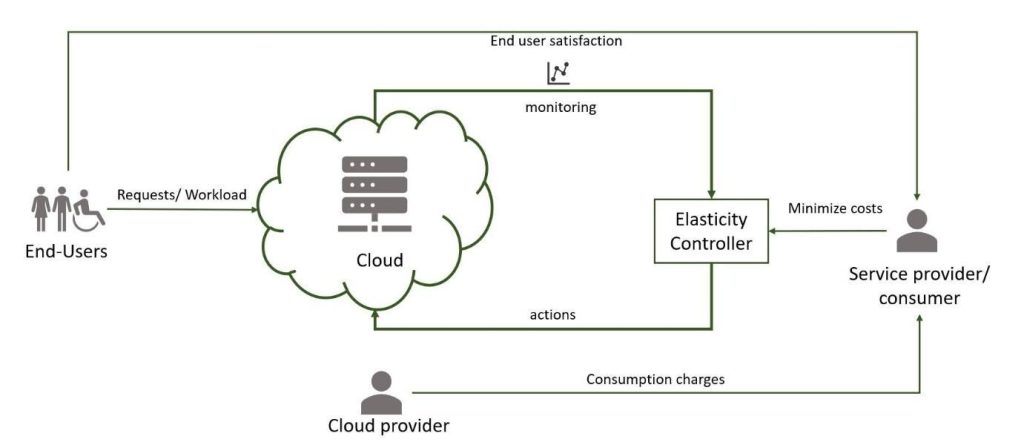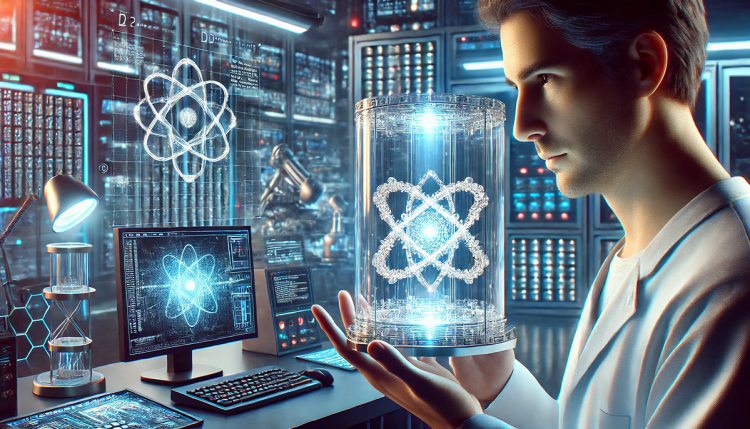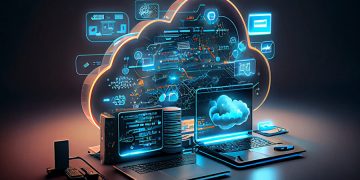Introduction: The Age of Exponential Computation
In the 21st century, computing power has become the invisible engine driving human civilization. Every technological leap — from artificial intelligence to space exploration — depends on one critical foundation: computation. As the digital world expands, so does our dependence on computing capacity, which determines not only the speed of our devices but also the very limits of innovation.
We are now entering an era where computing power is as vital as electricity or oil once was. It fuels economies, defines global competition, and underpins the next generation of intelligence — both human and artificial. This article explores the rise of computing power, its evolution, and its profound impact on the world’s future.
1. Understanding Computing Power: The Core of Digital Civilization
Computing power, or computational capacity, refers to the ability of a computer system to process data and perform calculations. In simple terms, it measures how fast and efficiently machines can think.
1.1 The Evolution of Computing Power
From the early vacuum tubes of the 1940s to the silicon chips of the 21st century, computing power has followed an exponential trajectory predicted by Moore’s Law: the number of transistors on a chip doubles approximately every two years. This relentless progress has transformed computers from room-sized machines into pocket-sized devices with millions of times more capability.
However, we are now approaching physical and thermal limits of silicon-based computing. To sustain progress, the industry is shifting toward new paradigms such as multi-core processors, distributed computing, and specialized chips for AI and quantum processing.
1.2 Measuring Computing Power
Computing performance is often measured in FLOPS — floating point operations per second.
- GigaFLOPS (GFLOPS) = billions of operations per second.
- TeraFLOPS (TFLOPS) = trillions of operations per second.
- ExaFLOPS (EFLOPS) = quintillions of operations per second.
In 2024, the world entered the exascale era with supercomputers capable of over one quintillion calculations per second — enabling breakthroughs in weather forecasting, material science, and AI training.
2. The Global Computing Power Race
Just as oil shaped the industrial age, computing power defines the digital age. Nations now compete not only for natural resources but for computational dominance.
2.1 The Rise of Data Centers and Cloud Infrastructure
Modern computing is no longer confined to personal devices. The true backbone of global computation lies in data centers — vast facilities filled with servers processing and storing information for billions of users.
Tech giants like Amazon, Google, Microsoft, and Alibaba operate massive global cloud networks, offering computing resources as a service. This cloud computing model has democratized access to high-performance computation, allowing startups, researchers, and governments to run complex simulations or AI models without owning expensive hardware.
2.2 The Geopolitics of Compute
Control over semiconductor manufacturing and supercomputing resources has become a strategic priority. The United States, China, and the European Union are all investing heavily in their computing ecosystems.
In 2025, the U.S. Frontier supercomputer, China’s Tianhe-3, and Japan’s Fugaku lead the global race — not only for scientific research but for economic and military advantages.
Computing power has thus become a new geopolitical asset — one that defines technological sovereignty and national competitiveness.
3. Computing Power and Artificial Intelligence
AI’s astonishing rise over the past decade has been fueled by one critical factor: access to massive computing resources.
Neural networks, which mimic human cognition, require enormous amounts of data and computation to train. The power of an AI model often scales with the amount of compute available.
3.1 The Compute-AI Feedback Loop
More computing power allows researchers to build larger AI models; these models, in turn, generate new data and insights that require even more computing power. This positive feedback loop has led to the explosion of generative AI — from ChatGPT and image generators to autonomous robotics and real-time translation systems.
In 2012, the largest AI model had around 60 million parameters. By 2025, frontier models exceed 1 trillion parameters, trained on thousands of GPUs consuming megawatts of energy. Computing power has thus become both the lifeblood and the bottleneck of AI progress.
3.2 Specialized Hardware for AI
Traditional CPUs (central processing units) are no longer sufficient for AI workloads.
Specialized chips such as GPUs (graphics processing units), TPUs (tensor processing units), and AI accelerators have revolutionized machine learning by enabling parallel processing of massive datasets.
Companies like NVIDIA, AMD, and Huawei are leading innovations in chip design to optimize performance and energy efficiency for AI applications.
3.3 The Compute Divide
Not all countries or organizations can afford this level of computing. A widening compute divide is emerging, where only a handful of tech giants and nations possess the infrastructure to train large-scale AI. This disparity risks creating a digital hierarchy that could reshape global power structures.
4. The Energy Challenge: Powering the Power
While computing power accelerates innovation, it also demands enormous energy.
Modern data centers consume more electricity than some countries, raising questions about sustainability and environmental responsibility.
4.1 The Carbon Cost of Computation
Training a large AI model can emit as much CO₂ as five cars over their lifetime. As AI and big data workloads grow exponentially, the carbon footprint of computation becomes an urgent global issue.
To address this, companies are investing in green computing — optimizing hardware efficiency, recycling waste heat, and using renewable energy to power data centers.
Google and Microsoft have pledged to operate carbon-free data centers by 2030, while emerging technologies like liquid cooling and chip-level optimization promise to reduce energy use.
4.2 Toward Energy-Aware Algorithms
The next step is not only building more efficient hardware but also designing algorithms that think smarter, not harder. Researchers are exploring energy-aware AI — models that adapt their computational intensity based on context, reducing unnecessary power consumption without sacrificing accuracy.

5. Beyond Silicon: The Future of Computing Architectures
As silicon-based transistors reach their physical limits, scientists are pioneering new computing paradigms that will define the next era of computation.
5.1 Quantum Computing
Quantum computers use qubits — particles that can represent multiple states simultaneously — allowing them to solve problems in seconds that would take classical computers millennia.
Although still in its early stages, quantum computing holds promise for cryptography, drug discovery, and optimization problems that could revolutionize science and industry.
5.2 Neuromorphic Computing
Inspired by the human brain, neuromorphic chips process information through networks of artificial neurons and synapses. These chips consume far less energy than traditional architectures and could enable real-time AI at the edge — in phones, drones, and autonomous systems.
5.3 Photonic and Biological Computing
Researchers are experimenting with light-based computing (using photons instead of electrons) and biocomputing (using DNA molecules for data storage).
DNA-based storage could hold all the world’s data in a device the size of a shoebox — a mind-bending vision of future computation where biology and technology merge.
6. Democratizing Computing Power: The Next Digital Frontier
To fully harness the benefits of computation, access must be inclusive.
Distributed networks, such as edge computing and decentralized AI, aim to move processing closer to where data is generated — reducing latency, enhancing privacy, and lowering costs.
Blockchain-based systems are also exploring compute sharing, allowing individuals to contribute spare computing capacity to global networks, creating a “compute commons” that mirrors the sharing economy of the internet age.
In the coming decade, we may see the rise of computing power as a public utility, treated like water or electricity — an essential infrastructure for human progress.
7. Ethical and Philosophical Reflections
The rise of computational intelligence raises questions not only about efficiency but about meaning.
- What happens when machines surpass human cognitive capacity?
- Will societies be governed by algorithms too complex for humans to understand?
- And who controls the infrastructure of intelligence itself?
Computing power is no longer just a technical measure — it is a reflection of human values. The choices we make in distributing and using this power will shape the moral foundation of the digital age.
Conclusion: The New Fuel of Civilization
Computing power has become the defining resource of our century — powering artificial intelligence, driving scientific breakthroughs, and shaping global economies.
As we move into the post-silicon era, the challenge is no longer whether we can build faster machines, but how we use them responsibly, sustainably, and inclusively.
The future will not be written by those who merely have data — but by those who have the power to compute it.
In that sense, computing power is not just the engine of technology — it is the pulse of civilization itself.












































